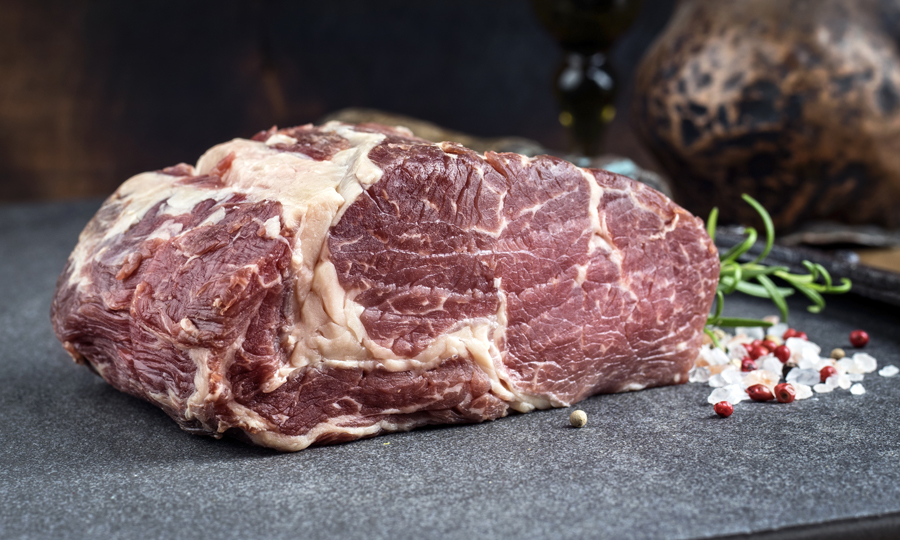In today’s foodie culture, it’s no surprise there’s a controversy over dry versus wet aged beef: which is superior? They all ask. We ask: wait, what is it? Come with us as we dive into the world of aging beef.
Let’s start with dry-aging.
This method allows beef to sit in the open air of a meat case or locker so that it can begin naturally breaking down. As time passes, the texture and flavor of the meat improves thanks to a few factors. First there’s tenderization. This happens when the meat’s naturally occurring enzymes break down some of the tougher connective tissues and muscle fibers.
Then there’s the flavor change caused by these enzymes and other bacteria doing their thing, as well as the oxidation of fat and other fat-like molecules. All of this creates a unique, somewhat “funky” flavor in the meat that evolves the longer you let it age. Before it’s served, the outer layers are sliced off (where the microbes have been successfully partying), and you are left with a concentrated flavor pack of beefed up, well, beef. [pagebreak]
What about wet-aging?
Wet-aging, on the other hand, is a process developed by the industry where meat is hermetically sealed in plastic and “aged” on the refrigerator shelf or in transit to its final destination. Most of the saran-wrapped meat purchased in grocery stores is “aged” this way, simply because he majority of beef travels a fair distance in order to reach the meat counter. The main perk of wet-aging, at least for the industry, is that less water weight is lost (resulting in more money gained), plus the aging process is faster.
Since the meat is sealed and unable to breathe, there is no oxidation of fat preventing the development of “funky” flavors many beef connoisseurs prefer. The meat instead ages in contact with its own blood, lending it an intense sour note with a “serumy” (read bloody) flavor. So where’s the controversy? [pagebreak]
The two processes are simple yet complicated, similar yet different. Until 30 years ago, dry aging had been the standard for storing beef that wasn’t canned or cured. Then modernity struck. Once the infamous plastic bag came into play, wet-aging was discovered by the meat packing industry and the dry vs. wet aged controversy began.
All in all, it comes down to personal preference. While some prefer their beef aged 30 days covered in the light fuzz of microbial mycelia, others want a wet, bloody ribeye fresh from the meat counter. The choice is yours, no matter how you cut it.


![Making Mealtime Matter with La Familia: Easy Sofrito [Video]](https://thelatinkitchen.com/wp-content/uploads/2015/10/sofrito-shutterstock__0-500x383.jpg)
![Easy Latin Smoothies: Goji Berry Smoothie [Video]](https://thelatinkitchen.com/wp-content/uploads/2015/12/goji_berry-shutterstock_-500x383.jpg)
















![Fun and Fast Recipes: Fiesta Cabbage Salad [Video]](https://thelatinkitchen.com/wp-content/uploads/2015/11/fiesta_cabbage_slaw-shutterstock_-500x383.jpg)









